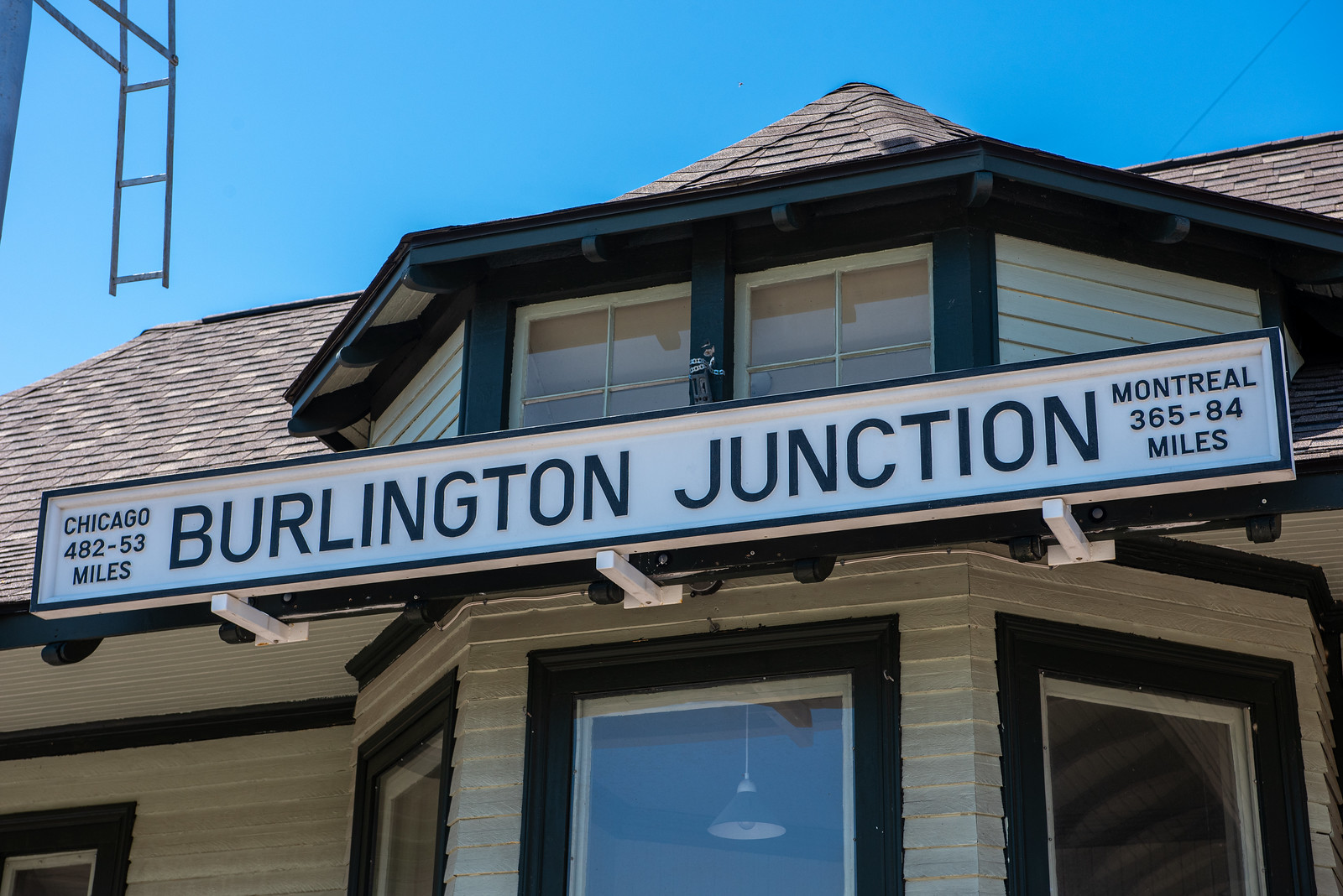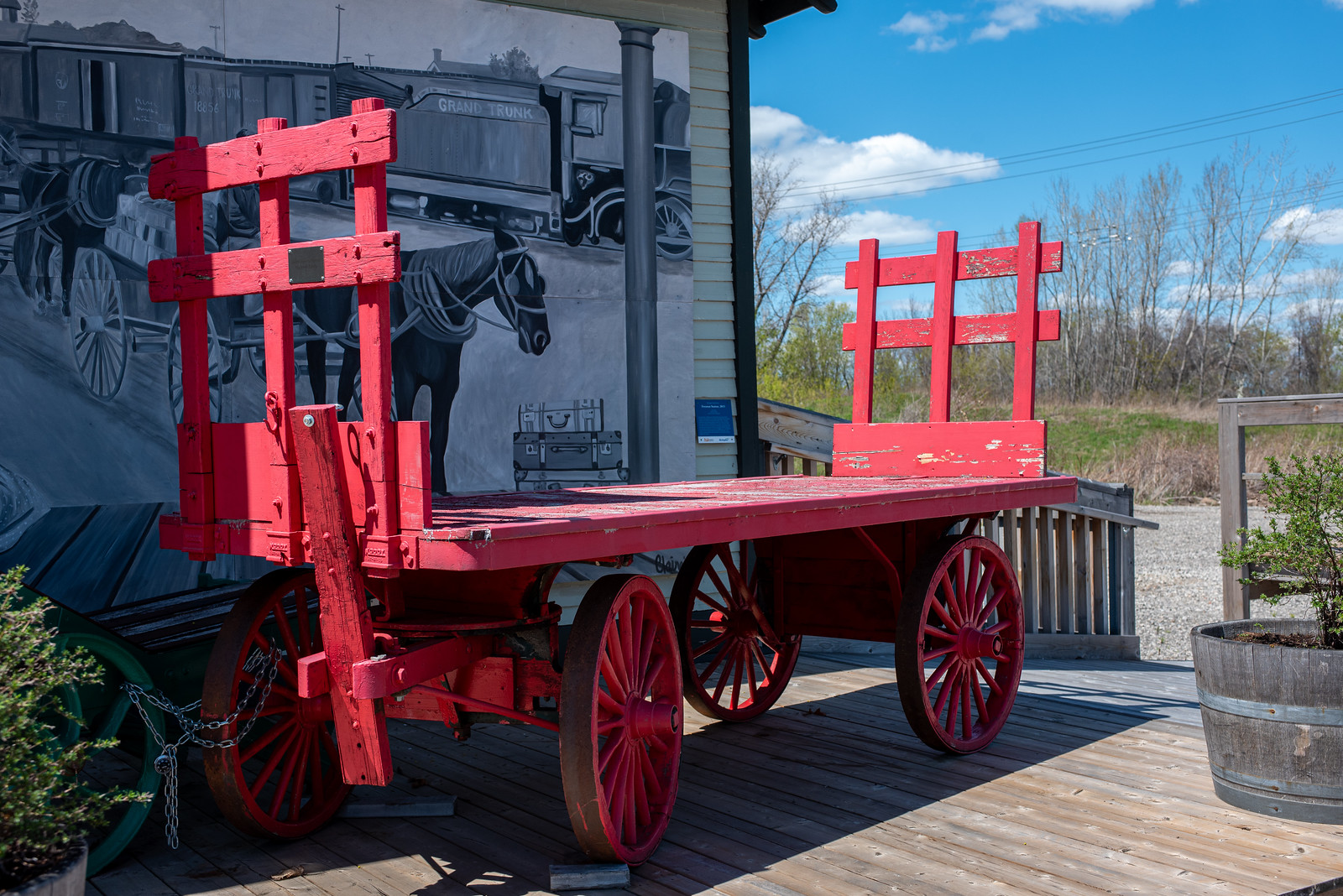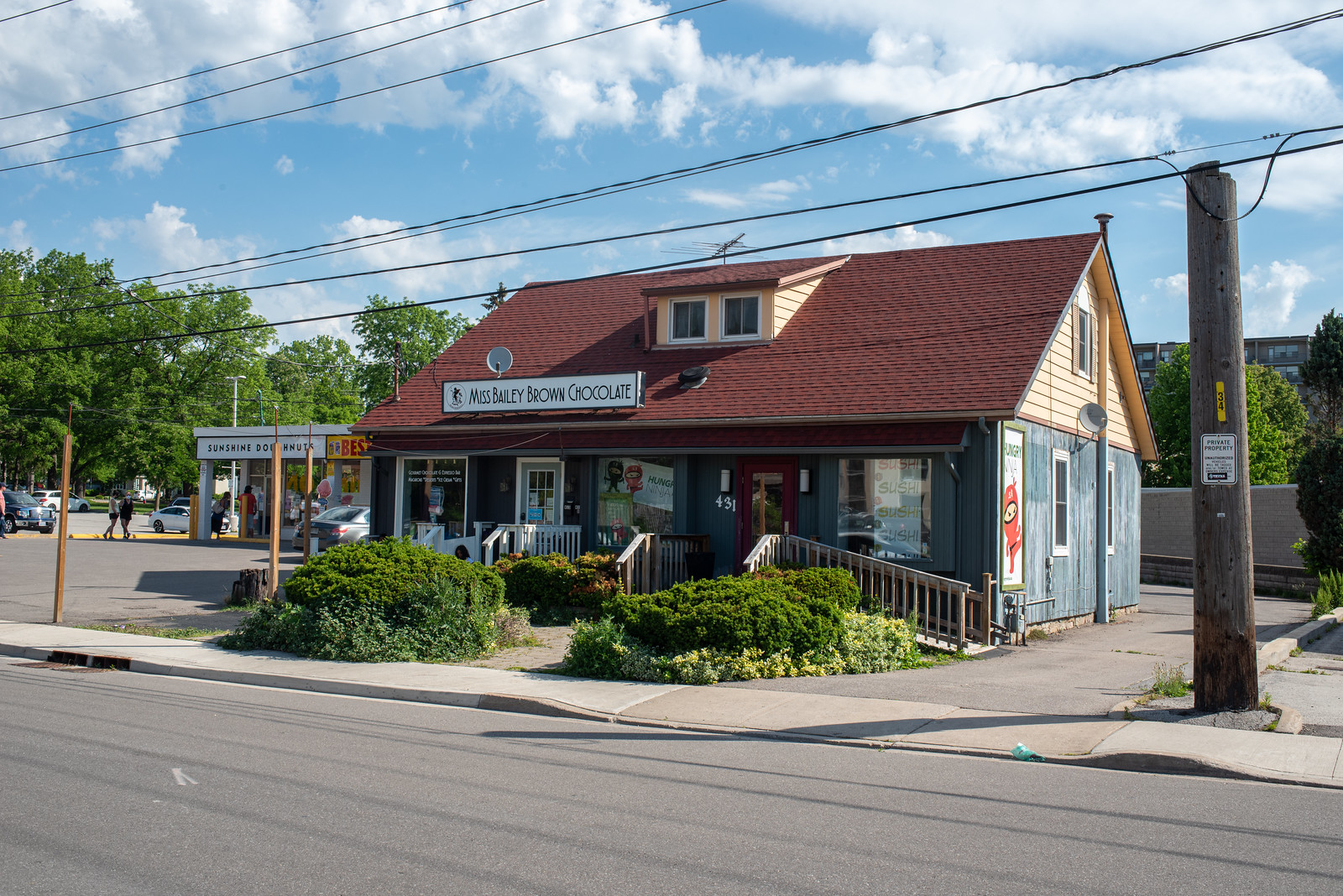It’s easy to miss the Freeman Station, tucked in next to a fire station and below a burn. It also seems a bit out of place, with the railroad a good distance from the station proper, almost as if the line itself was moved. But in reality, the station itself has been moved from its original station like so many before. And despite its look, Burlington Junction, as it was officially called, was once a hub of railroad activity in Burlington.

Graflex Crown Graphic – Fuji Fujinon-W 1:5.6/125 – Ilford HP5+ @ ASA-200 – Pyrocat-HD (1+1+100) 9:00 @ 20C
During the first railway boom in Ontario, Burlington, as we know it today, did not exist; the modern downtown of Burlington was the village of Centre Wellington. Nelson Township was a small collection of villages. The first railway to arrive in Nelson passed through Freeman, located at the modern intersection of Brant Street and Plains Road. The railway to pass through was a short line running from Hamilton to Toronto and quickly attracted the attention of the Great Western Railway. Great Western purchased and eventually completed access into Toronto gave them an advantage by now having access to Ontario’s two major urban centres, Hamilton and Toronto. At Freeman, Great Western built a simple two-storey station in 1855 located near the modern Burlington GO station sits today. While there are no visual depictions of the original station, the layout potentially had a waiting room, station office, baggage room. At the same time, the second storey housed an apartment for the station master. A typical arrangement, especially in rural settings. The station provided the village with access to wider markets for agriculture and timber resources. Freeman became a part of the town of Burlington in 1874, and two years later, the Hamilton & North-Western Railway arrived, building their station in the downtown of the new town. Freeman station found itself at a junction between the Great Western Line and the Hamilton & North-Western Line. It also proved an important station for the growing fruit and canning business that now formed a core of its economy. In 1882 Grand Trunk acquired Great Western and in 1888 took over North & North-Western (formed in 1879 as a merger between Northern Railway of Canada and Hamilton & North-Western Railway). The Freeman Junction quickly became a far busier junction station on the Grand Trunk network. Not only for freight services but also for passenger services. From Freeman, one could go as far east as Montreal and west to Chicago.

Nikon D750 – AF Nikkor 35mm 1:2D
Nikon D750 – AF Nikkor 35mm 1:2D
In 1904 the old station burned down. Having no choice, Grand Trunk, who probably would have replaced the station, eventually completed a new station in 1906, renaming the stop to Burlington Junction. The new station followed the popular Queen Anne Revival and Picturesque style and was constructed of wood in a board and batten style with a limestone foundation. Larger than other stations due to it being a junction, the station was only a single-storey. There is a single general waiting room and a large freight and baggage office. A station master’s office, ticket window and telegrapher bay. Like other stations of the era, it was painting in a typical green, mauve, and grey colour scheme. While passenger service remained popular, the proximity to Biggs Fruit, Alymer Canning, and Tip Top Cannery ensured that freight remained a major driver of train traffic. Volumes stayed high throughout the Grand Trunk years and well into Canadian National operations starting in 1923. Even through the depression years and into the war years, the station continued to operate. In the mid-century, Canadian National repainted the station a typical railroad red. GO Transit reached a sharing agreement with Canadian National in 1967 to allow its passengers to use the station during morning and evening rush hours. Passenger service continued under VIA rail in 1977 while Canadian National continued to use the station for freight operations. Operations out of the old Burlington Junction station continued until 1988; GO has opened a new station in 1982 and VIA in 1988. Canadian National had also ceased use of the station as much of the freight traffic from Burlington had ceased.

Nikon D750 – AF Nikkor 35mm 1:2D
Nikon D750 – AF Nikkor 35mm 1:2D
By 1990 the station was abandoned, sitting sadly next to the modern GO and VIA Stations. A local group known as Save Our Station had formed to save the old junction station from demolition. But it was mainly talking, and demolition seemed the station’s future. And so the station sat doing nothing for another decade when in 2005, Canadian National was ready to begin expansion of their right-of-way. Either the station had to be moved, or it would be demolished. When Canadian National offered up the station at no cost, the city footed the bill to move the station. While the city did find space to move the station temporarily, it quickly became a hot potato; no one group wanted responsibility for the restoration and upkeep. Nor could a permanent spot be found. It looked like the station would again face demolition. It would take another five years before any action was taken, and in 2011 the city council found space next to the fire station on Plains Road. A second group that had been lobbying for action, Friends of Freeman Station, took charge of the old station and, after a lengthy fundraising campaign, started restoration efforts in 2015. The red was replaced by a simple two-toned green colour. Inside was converted into a museum with plenty of artefacts from Burlington’s railway days. The station reopened with great fanfare in 2017. Today the station remains a little known museum with a big presence. And is certainly on my list of places to visit and check out the interior. The museum is operated by a crack team of volunteers who carry forward the passion many railway museums have, especially the small ones. They have recently acquired some new rolling stock to display outside.